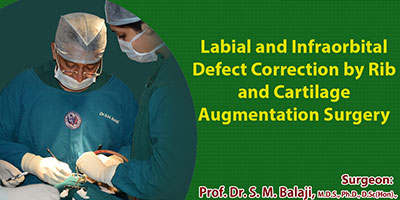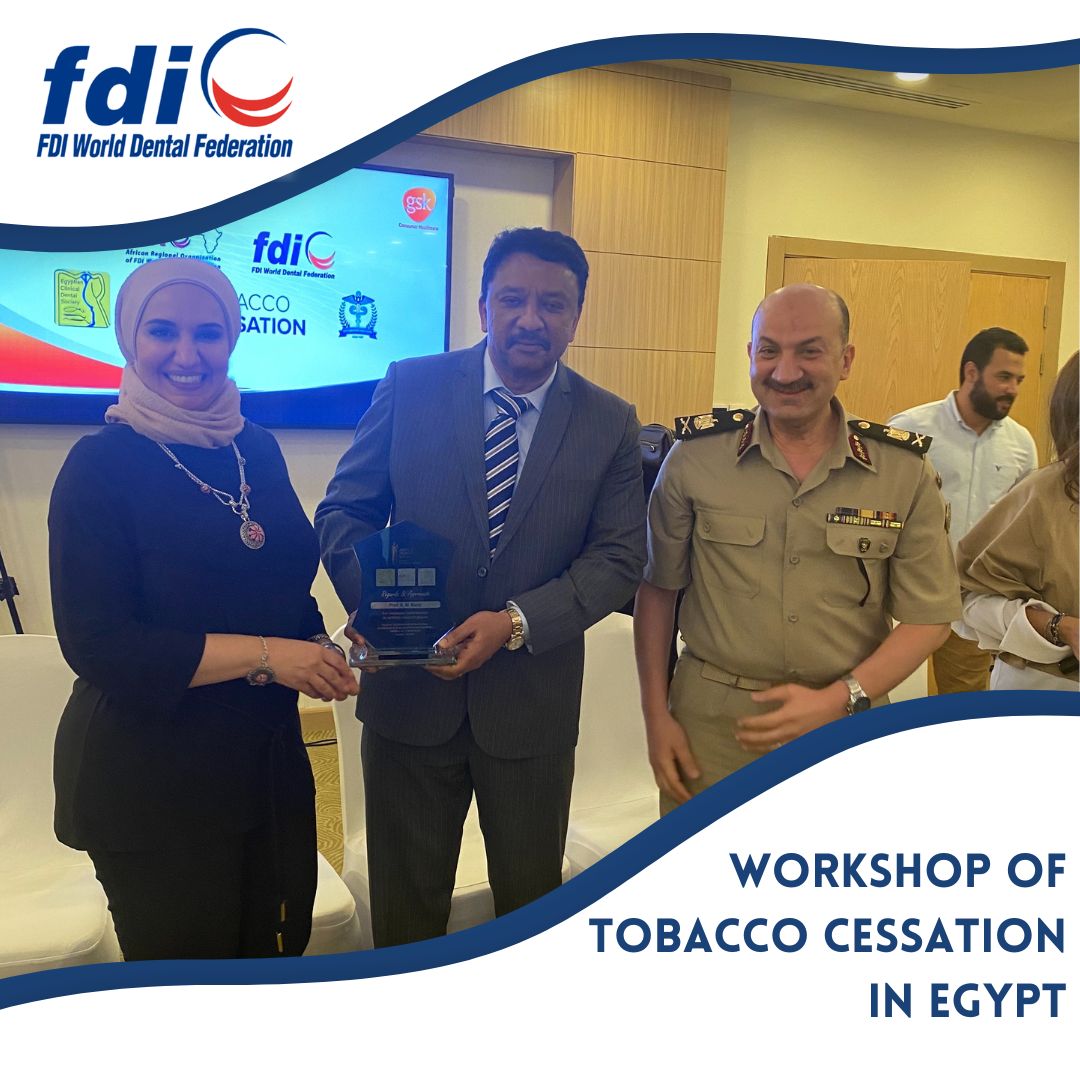
by smbalaji | Nov 10, 2018 | Surgery, Video
Emergency surgery after RTA results in open bite and flattened bridge of nose
This young lady is from Salem, Tamil Nadu. A road traffic accident five months ago resulted in fractures to her maxilla and a comminuted nasal bone fracture. Emergency surgery elsewhere left her with a flattened bridge of the nose and an open bite. Feeling very dissatisfied, she approached a local surgeon who referred her to us.
Le Fort I osteotomy surgery planned to correct open bite
Dr SM Balaji, nose correction and facial deformity correction specialist, examined the patient. He ordered imaging studies for the patient. He decided on a LeFort I maxillary osteotomy for the open bite correction. Treatment plan was then explained to the patient in detail. The patient was in agreement and consented to surgery.
Open bite surgery and rib graft for correction of flattened nose
Under general anesthesia, a rib graft was first harvested. A Valsalva maneuver demonstrated a patent thoracic cavity. The incision was then closed with sutures. Attention was next turned to the maxilla. A vestibular incision was then made exposing the maxillary bone. Plates used in the previous surgery were then removed. A LeFort I maxillary osteotomy was next performed. Arch bars were next wired to both jaws for stabilization. Following this, the vestibular incision was then closed with sutures.
The flattened bridge of nose was then addressed. The rib graft was first crafted to the right size. It was then tunneled to the bridge of the nose through a transcartilaginous incision. This resulted in a straight profile to the patient’s nose. The incision was then closed with sutures.
The patient expressed complete satisfaction before discharge from the hospital.
Surgery Video

by smbalaji | Nov 2, 2018 | Surgery, Video
Young man with residual facial deformities from motor vehicle accident
This young man from Indore, Madhya Pradesh, was riding his bike when he collided with a car 1.5 years back. He suffered facial fractures involving the maxilla, zygoma and orbital region. The patient underwent surgical correction at a local hospital after the accident. This surgery left him with residual deformities. These included an anterior crossbite and a sunken right zygoma with enophthalmos.
The patient presents to our hospital for specialized facial deformity correction
Dr SM Balaji, facial deformity correction specialist, examined the patient. He ordered 3D CT scan and other imaging studies. There were many plates seen from the previous surgery. The maxilla was in a retruded position. He recommended advancing the maxilla forward with a Le Fort I osteotomy for crossbite correction. Other recommended surgeries were refracture of the zygoma with plate fixation. Release of herniated fat trapped in the right eye with Titanium mesh placement was also recommended for enophthalmos. The patient consented to surgery.
Patient undergoes correction of anterior crossbite with Le Fort I maxillary advancement osteotomy
Under general anesthesia, a buccal vestibular incision exposed the old maxillary plates. These were then removed and the maxilla advanced forward with a Le Fort I advancement osteotomy. This resulted in correction of the anterior crossbite. Four L-shaped four holed plates were utilized to achieve this.
Enophthalmos and zygomatic depression correction done for the patient
The enophthalmos and depression in the zygoma were then addressed. A right lateral canthal incision was first made. This was then followed by a right transconjunctival incision. Dissection down into the floor of the orbit exposed the herniated fat under the eye, which was freed. An old plate from the previous surgery was then removed through the lateral canthal incision.
The zygoma was then refractured and repositioned with new plates. This resulted in correction of the depressed zygoma. The enophthalmos was then addressed. A Titanium mesh with Medpor was used to correct it. The Titanium mesh was then fixed with screws to the lower orbital rim. All incisions were then closed with sutures and the patient extubated.
The patient expressed complete satisfaction at the results of the surgery before final discharge.
Surgery Video

by smbalaji | Oct 30, 2018 | Surgery, Video
A brief introduction to Tessier’s facial cleft and their management
Tessier’s facial clefts are of 14 types. They can extend from the hairline above the forehead to the mandible. These malformations can be debilitating for the patient and distressing for the family. It requires extensive surgical correction to rehabilitate these patients. Tessier’s facial clefts can also include malformations of the brain.
A patient with Tessier’s facial cleft presents to our hospital
This young man was born with Tessier’s facial cleft. He has already undergone innumerable surgeries elsewhere in the past. A doctor in his hometown referred him to our hospital for further management. Dr SM Balaji, facial reconstruction specialist, examined the patient and ordered radiographic studies. The patient needed maxillary augmentation, nasal notch correction and right alar web correction. He explained that rib grafts were mandatory for this surgery. The patient and his parents consented to the surgery.
Surgical correction of labial and infraorbital defect with rib grafts
Under general anesthesia, rib grafts were first harvested from the patient. A Valsalva maneuver demonstrated a patent thoracic cavity. The incision was then closed in layers with sutures. Attention was next directed to the patient’s labial defect. There was heavy scarring of the buccal vestibular mucosa from the previous surgeries. Incisions were made in the vestibular region. A costochondral graft was then shaped and placed in the anterior maxillary region. Rib grafts were then used to augment the remaining maxillary defects. The grafts were then fixed with screws. Sutures were then used to close the incisions.
Attention was next turned to correction of the nostrils. Notching on the left nostril was then corrected followed by right alar web correction. The incisions were then closed with sutures.
The patient recovered without event from general anesthesia. The patient and his parents expressed their complete satisfaction at the results.
Surgery Video

by smbalaji | Oct 28, 2018 | Surgery, Video
Patient with disproportionate upper lip presents at our hospital
This patient is from Rohtak, Haryana. He was born with congenital disproportion between the size of his lips. His upper lip has always been everted and large. This had begun affecting his social life and his work life. He presented to our hospital for lip reduction surgery.
Initial Examination and biometric analysis for treatment planning
Dr SM Balaji, cosmetic lip surgery specialist, examined the patient. He obtained biometric measurements of the patient’s lips and face. Using various analyses, he determined the exact extent the upper lip needed reduction. He explained the surgical correction procedure in detail to the patient. The patient consented for surgery.
Surgical reduction with removal of excess tissue from the upper lip
Under general anesthesia, the region of lip that needed reduction was marked out. An incision was then made along the marking on the lip. This was then extended down into the submucosal region. Excess tissue was then dissected and excised from the region. The vermillion borders of the incision were then reapproximated with sutures. A two week postoperative visit was scheduled at the hospital. The patient expressed complete satisfaction at the results of the surgery.
Surgery Video

by smbalaji | Oct 24, 2018 | Surgery, Video
Patient with partial edentulousness presents for implants at our hospital
This young man is from Ranchi, Jharkhand. A biking accident resulted in direct trauma to his jaws and oral cavity. He suffered fractures to both jaws as well as to many teeth. Fracture fixation and fractured teeth extraction was first performed elsewhere. This surgery resulted in a bony defect in the left maxilla. He desired complete oral rehabilitation with implant placement for missing teeth.
Treatment planning presented to the patient after diagnostic studies
The patient presented to our hospital for oral rehabilitation. Dr SM Balaji, Implant specialist and facial trauma specialist, examined the patient. He ordered a 3D CT scan and other imaging studies. This revealed a bony defect in the left maxilla. There was also a periapical cyst in the remaining left upper central incisor. He explained to the patient that the tooth needed to be extracted. Rib graft was necessary for implant placement in that region. The patient agreed to the treatment plan and consented for surgery.
Successful left maxillary defect augmentation with rib graft
Under general anesthesia, an inframammary incision was made to harvest a rib graft. A Valsalva maneuver was then performed to ensure patency of the thoracic cavity. The incision was then closed. Following this, a maxillary flap was then raised and the central incisor extracted. The periapical cyst associated with the tooth was then enucleated. Rib graft was then used to augment the left maxillary defect. It was crafted to the correct size and fixed with screws. Implants will be placed around six months after fusion of the rib graft to the underlying bone.
Successful implant placement in edentulous regions of the oral cavity
The edentulous regions of the oral cavity were then addressed. Implants were then placed. A bone graft was then placed in the anterior mandible to stabilize the anterior implants. Crown placement will be done in three month’s time after osseointegration is complete. All plates and screws from the previous surgery sites were then removed. All incisions were then closed with sutures. The patient recovered well from general anesthesia.

by smbalaji | Oct 20, 2018 | Surgery, Video
Child with scaphocephaly referred to our hospital for craniosynostosis surgery
The patient is a 1-year old boy from Jaisalmer, Rajasthan with scaphocephaly. This is the simplest form of craniosynostosis. It involves fusion of the sagittal suture. His mother became very worried after observing an abnormal shape to his growing head. A consultation with a local neurosurgeon confirmed the diagnosis of scaphocephaly. This doctor referred them to our hospital for surgical management of the child.
Patient scheduled for surgery after obtaining parental consent for surgery
Dr SM Balaji, Craniosynostosis surgery specialist, examined the child along with his team of neurosurgeons. He ordered a 3D CT scan and other imaging studies. This confirmed the earlier diagnosis of scaphocephaly. He explained the effects and potential complications to the parents. There could include increased intracranial pressure, visual impairments, seizures and skull deformities. They were advised that these needed immediate treatment. The child’s parents were in complete agreement and consented to surgery.
Mock surgery performed on 3D stereolithographic model of the patient’s skull
A 3D stereolithographic model was first obtained of the patient’s skull. The anatomy of the patient’s skull was studied and a mock surgery performed on this model.
Craniosynostosis surgery performed with adequate relief provided for growing brain
The neurosurgical team was present and assisted throughout the entire operation. Under general anesthesia, a bicoronal flap was first raised and skin clips used to hold the flap. Markings were then made on the bone and a craniotome used to section the skull. The bone along the edges of the cut skull sections was removed. This would provide adequate relief for brain growth. Barrel stave cuts were then made on the bony sections to provide further relief. This would ensure development of the brain to its full size.
Vicryl sutures were then used to hold the various bony sections in their correct place. The bicoronal flap was then closed using surgical staples. Vital signs were closely monitored throughout the surgery and were normal.
Uneventful postsurgical course after craniosynostosis surgery on the child
The child’s postoperative course was uneventful. He was very active and playful the day after surgery. They were then discharged with instructions to present in 12 days for staple removal.
Normal parameters observed at the 12th day postsurgical appointment
At the 12th day recall appointment, the patient’s postsurgical healing was normal. The surgical staples were then removed and the patient discharged. The patient will be monitored at regular intervals to ensure normal growth of the brain.









